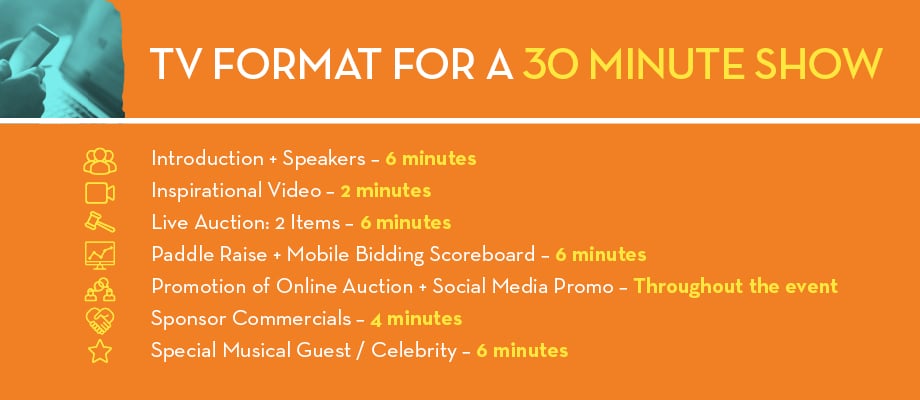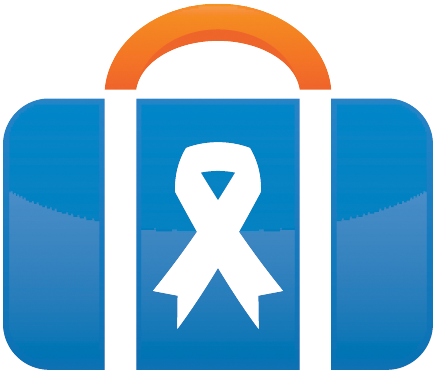Benefit auctions have long been reliable event options for nonprofits of all sizes, and for good reason! Both live and silent auctions are engaging for donors and can deliver substantial returns on the time and resources you invest in them.
However, with the COVID-19 pandemic and its wide-sweeping effects, we’re in a brave new world when it comes to fundraising events.
There are strategies to help recession-proof your fundraising, but how can you continue actually engaging with your supporters during times of crisis? Continued engagement is essential for boosting the long-term sustainability of any fundraising strategies you take on.
If your organization relies on benefit auctions (or was planning on hosting one soon), you’re probably faced with a number of sudden challenges. As nonprofits of all sizes undergo shifts towards virtual fundraising and donor engagement, there’s definitely a risk of missing essential best practices needed to ensure virtual success. Is your event fundraising at risk?
Here are 4 common challenges many nonprofits are facing, including:
- You can’t host an in-person event.
- You need to make your virtual event stand out online.
- You have no idea which items to procure to go virtual.
- You want to reach a wider online audience.
Remember, even though the nonprofit sector is facing unprecedented times, your mission depends on your fundraising. No matter what, you still need to engage donors and raise funds. Auctions can and should remain a key part of your strategy, you just have to rethink how you execute them!
We’ll dive into these common challenges and how to solve them with online strategies, tools, and partners. Let’s get started.

Challenge 1: You can’t host an in-person event.
With shelter-in-place and social distancing guidelines, in-person fundraising events have been put on hold across the country and world.
While exact recommendations and next steps vary between locations and organizations, shifting towards virtual events is an alternate strategy that works. Virtual and online events allow you to pivot your donor engagement strategy and attract donors’ attention (and support) to continue fundraising.
Solution: Host an online auction.
If your auction plans have been put on the backburner, or you need a back-up plan for an event in the coming months, virtual events can give you a digital solution. These auctions are conducted entirely online via a dedicated event website, item catalog, and mobile bidding tools.
The process of planning a virtual or online auction is similar to that for a traditional silent auction or live auction. You’ll still need to procure items and then promote and host your event, but the main differences include an online experience and a longer timeframe. While traditional live auctions are hosted on a single night, online auctions typically span between several days up to two weeks.
There are some major benefits to hosting online auctions, especially today when resources are stretched and in-person events might be impossible:
- Online auctions are more cost-effective than traditional events, with no added venue or food expenses.
- Online events, coupled with the right software, give you access to invaluable engagement data to keep improving your events.
- Online consumers are already accustomed to eCommerce and online bidding (like on eBay), so there’s often not much of a learning curve for bidders.
- Online auctions are extremely flexible and scalable for your unique audience, mission, and budget.
Most importantly, online auctions are engaging for donors. Offering tangible items along with a convenient online experience is a surefire way to catch attention and keep your organization on supporters’ minds, even in a time of crisis.
Compared to other types of events, it’s fairly easy to transition your in-person auctions to virtual settings. Proper planning and technology can go a long way to help.

Challenge 2: You need to make your virtual event stand out online.
The internet is a crowded place! As more and more nonprofits move their events and engagement strategies online, the competition for attention will only get more fierce.
Of course, your most dedicated base of support will be there to receive your messages and engage with your upcoming online auction. But how can you maximize that engagement and ensure follow-through from registrants?
You’ll need to incorporate one or more additional strategies into your plans to make your online auction as exciting as possible.
Solution: Explore your live-streaming options.
Livestreaming video has become a crucial part of nonprofits’ toolkits practically overnight. As a way to engage remote audiences, boost the energy of your virtual events, and reinforce the personal and community ties of your organization, livestreaming is invaluable.
Your online auction might incorporate livestreaming in a number of ways, including:
- Kickoff announcement or virtual party to celebrate your auction’s launch and explain the bidding process.
- Livestream auction, gala or program to showcase your cause.
- Combination of pre-recorded video and live programming.
- Periodic check-ins to boost energy and highlight specific items.
- A closing celebration to announce fundraising totals, thank your participants and volunteers, and discuss the impact that your donors have had.
Or, you might dive headfirst into live-streaming to host a complete virtual gala alongside your online auction.
With plenty of planning and the right tools, this strategy can be extremely effective at engaging your donors and tapping into the in-person excitement they’ve come to expect from your regular live events. Your online auction can occur simultaneously, with your gala scheduled as a grand finale event to close it out. You might even save one or more of your big-ticket items to auction off during live bidding portions of your virtual gala.
For instance, here’s how you might structure a half-hour live-streamed gala held alongside an online auction and incorporating live bidding elements:

There are a number of elements to get right for a livestreamed gala of any size:
- Make sure your team is prepared in advance.
- Be sure to test your technology prior to going live.
- To make sure you keep donors’ attention, make sure you’ve got an engaging host and clear schedule.
- Do a dry run to ensure your programming and program have good flow and energy.

Challenge 3: You have no idea which items to procure.
Auction item procurement is an important (if not the most important) element of planning any type of auction, whether virtual or in-person.
The items you procure and offer during your auction will have a direct impact on the event’s ROI and ultimate impact. Without great items that attract the right audiences, it can be very difficult to recoup the resources you’ve invested in planning your auction.
If your organization has never hosted an auction before, or if you’re looking to improve on your previous procurement strategies, it can be tricky to know where to start.
Solution: Study your organization’s historical data.
Your nonprofit’s database of past donation, engagement, and event attendance data should be your first stop when it comes to refining your procurement strategy. This is especially important for online auctions, as your items will need to actively attract participants in a crowded, competitive virtual space.
First, identify your auction’s target audience. Segment your donor data by whichever metrics you choose, like average donation level or age. Then, ask yourself questions about those target attendees:
- How much can they easily afford to spend on auction items?
- How old are they? Do they have children?
- What are their interests? Which events and campaigns have engaged them in the past?
Using what you know about your donors and how they prefer to engage with your nonprofit will help you develop an auction item catalog that’s much more likely to catch their attention (and bids).
Plus, you can use your donor data to identify additional revenue opportunities aside from auction bids. For instance, are many of your supporters eligible for corporate philanthropy programs through their employers? Learn more with this re:Charity guide.
In addition to specifically targeting your audience, there are a few additional best practices to keep in mind when it comes to procurement for an online auction:
- Consider packaging and shipping. You’ll need to ship physical items to their winners, so a priceless antique vase might not be the best move if you’re not prepared to spend on careful packaging and shipping. Consider adding Shipping Costs as a fixed price item, where donors can pay a flat fee to have items shipped to them.
- Hold virtual item pick up. Create a virtual signup sheet to allow supporters set times to pick up their items in a “contact-free” setting.
- Keep your offerings focused. Procuring too many items or too many of one price range can hamper the total bids you receive. Focus on one or two big-ticket items, and supplement them with additional standalone items and bundled baskets or packages.
- Be aware of travel restrictions. Travel and vacation packages are classic, reliable auction items, but travel might not be in the cards for most bidders right now. Make sure any travel packages you offer include flexible scheduling options.
A clear procurement strategy is just as important for online auctions as it is for traditional auction events. Work with your team to brainstorm ideas, review your data, and outline a plan, and be sure to get started as early as possible.

Challenge 4: You want to reach a wider online audience.
Dedicated supporters who are loyal to your organization and have been to your in-person auctions will be easy to convert to the online auction environment.
The real question is, how can you expand your base of support when you go online?
The great thing about virtual and online auctions is that anyone can participate. You are no longer bound to fundraising locations and proximity – you can fundraise from anywhere! Also, because virtual auctions are often free, ticket prices are no longer a constraining factor to attracting supporters.
What becomes important is how you reach new donors, and the tactics you take to amplify your online auction to reach new audiences. The key lies in social networks.
Solution: Tap into your social networks with ambassadors.
You’re likely already familiar with peer-to-peer fundraising. In these campaigns, you empower supporters to create their own individual giving pages and promote your campaign to their networks of friends and family.
Social fundraising methods can be extremely useful for growing your visibility and attracting more participants for your virtual events. There are two main approaches you might take:
- Peer-to-peer fundraising and recruiting. Encourage any of your supporters to promote your auction online, recruit new registrants, and potentially fundraise on your behalf in a social media campaign leading up to the event’s launch.
- Ambassador campaigning. With this more centralized approach, you enlist well-connected ambassadors in your donor base to recruit new participants and donors for your upcoming auction.
Both methods work well to help you reach much larger audiences of potential donors online. You can encourage your peer-to-peer volunteers and ambassadors with contests and prizes, but the more strategic style of ambassador campaigns means you’ll need to very actively empower them with the right resources and guidance they’ll need to succeed. Sample social media posts and virtual meetings to discuss the auction are both good ideas.
With the right high-powered ambassadors in your community, you can tap into the power of social proof to attract more interest in your auction. When someone you personally know and admire actively supports a cause, you’re much more likely to give it your attention. If you’re including live-streamed elements in your virtual event, a special ceremony to recognize and thank your ambassadors is a great way to express your gratitude and retain their support.
If you’ve never conducted a social fundraising campaign before, now’s the perfect time to try. Plus, these campaigns are useful for generating data you can use later to identify your most motivated supporters for future outreach. For instance, a peer-to-peer campaign to help you boost registrations for your online auction now will reveal the individuals who might be perfect ambassadors for your year-end giving efforts at the end of the year!
The shift towards virtual fundraising and engagement has undoubtedly brought new challenges and disruptions to the nonprofit sector. As classic fundraising events for nonprofits all sizes, auctions shouldn’t fall through the cracks.
Taking your auction virtual has its major benefits and creates great opportunities to raise more and deepen your relationships. However, make sure you’re not jumping into an online auction blindly! Do your research, take your time planning, and work with your team. Enjoy your auction!




